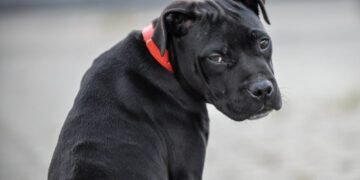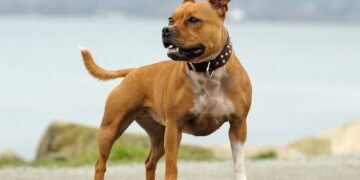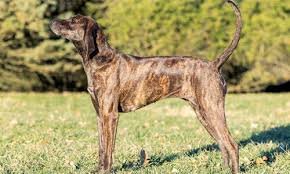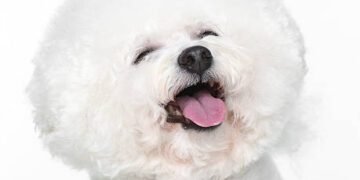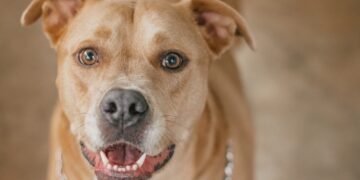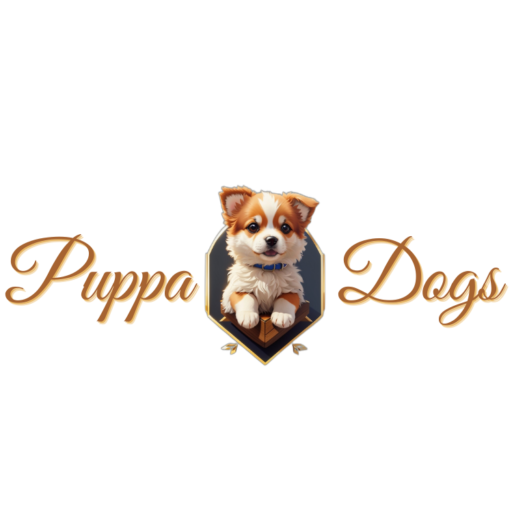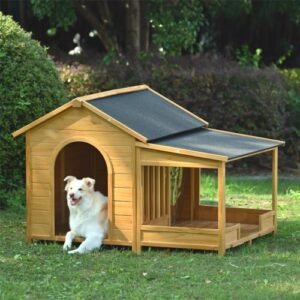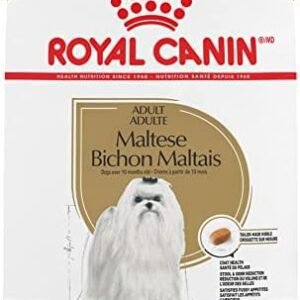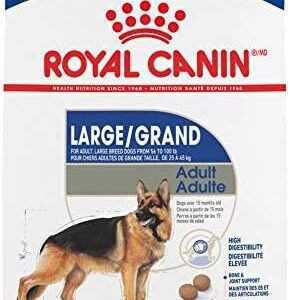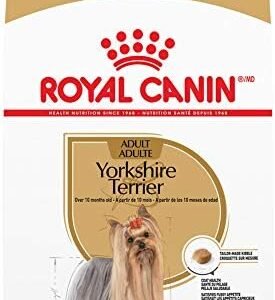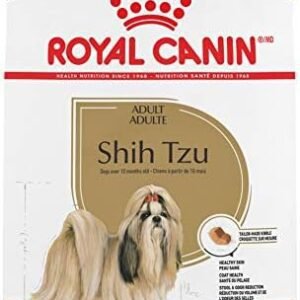Introduction
When it comes to the world of dog breeds, few can match the charisma and unique charm of the Shiba Inu. If you’ve ever encountered one of these compact, fox-like dogs, you probably understand the fascination that surrounds them. From their spirited temperament to their striking appearance, Shiba Inus have carved a special place in the hearts of dog lovers worldwide. In this comprehensive guide, we delve into the fascinating world of the Shiba Inu breed, providing insights into their unique characteristics and care requirements that every prospective owner should know.

The Shiba Inu Breed at a Glance
Let’s kick things off with a quick overview of the Shiba Inu breed. Below is a table summarizing key information about these captivating dogs:
| Field | Information |
|---|---|
| Height | Varies (13.5 – 16.5 inches) |
| Weight | 17 – 23 pounds |
| Life Span | 12 – 15 years |
| Good with | Families, singles |
| Temperament | Alert, loyal, independent |
| Intelligence | High |
| Shedding Amount | Moderate |
| Grooming | Regular brushing |
| Exercise Needs | Moderate to high |
| Energy Level | Very high |
| Barking Level | Moderate to high |
| Drool Amount | Minimal |
| Coat Length/Texture | Double coat, straight |
| Colors | Red, sesame, black & tan |
| Patterns | Urajiro (cream markings) |
This table serves as a snapshot of what you can expect when considering a Shiba Inu as your four-legged companion. Now, let’s dive deeper into the captivating world of Shiba Inus.
Table of Contents
The Shiba Inu’s Origins
Before we delve into the intricacies of Shiba Inu care and training, it’s essential to understand where these dogs come from. The Shiba Inu is a breed with deep-rooted origins in Japan. The word “Shiba” translates to “brushwood,” a reference to the breed’s hunting terrain in dense shrubs and brushwood.
Shiba Inus were initially bred for hunting small game in Japan’s rugged terrains, making them agile and intelligent hunters. Their history can be traced back over two millennia, with records of their existence dating as far back as 300 B.C. They are considered one of Japan’s oldest and most treasured dog breeds, with a heritage rich in tradition.
Shiba Inu’s Unique Characteristics
One of the most alluring aspects of Shiba Inus is their distinct appearance and captivating personality. Let’s explore some of their unique characteristics in detail:
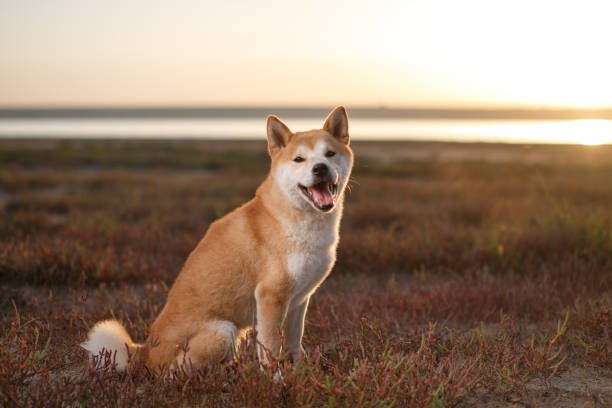
Appearance
Shiba Inus are known for their compact, well-balanced bodies and fox-like faces. Their small, triangular ears stand erect, giving them an alert and perky expression. Their almond-shaped eyes exude a sense of curiosity and intelligence. The breed’s double coat is plush and straight, with a soft undercoat for insulation.
Temperament
Shiba Inus are renowned for their spirited and independent nature. They often display a cat-like aloofness and may not always be overtly affectionate. However, their loyalty to their owners is unwavering. Shiba Inus are known to be alert, curious, and keen problem solvers.
Intelligence
These dogs are highly intelligent and often described as “cat-like” due to their independent thinking. While their intelligence makes them quick learners, it can also lead to stubbornness at times. Training a Shiba Inu requires patience and consistency.
Energy Level
Shiba Inus are bursting with energy. They are an active breed and enjoy physical activities such as hiking, jogging, and interactive play. Providing them with sufficient exercise is crucial for their well-being.
Shiba Inu Care
Owning a Shiba Inu comes with responsibilities. These dogs thrive when provided with proper care and attention. Here are some essential aspects of Shiba Inu care:
Grooming
Shiba Inus have a thick double coat that sheds moderately throughout the year, with heavier shedding occurring during seasonal changes. Regular brushing helps control shedding and keeps their coat healthy.
Exercise Needs
As mentioned earlier, Shiba Inus have high energy levels. They require daily exercise to keep them physically and mentally stimulated. A tired Shiba Inu is a well-behaved one.
Training
Training a Shiba Inu can be challenging due to their independent nature. Consistency, positive reinforcement, and early socialization are key to successful training.
Health
Shiba Inus are generally healthy dogs, but like all breeds, they are prone to certain health issues. Regular veterinary check-ups are essential to monitor their overall health.
Conclusion
In this comprehensive guide, we’ve explored the world of the Shiba Inu breed, from their intriguing origins to their unique characteristics and essential care requirements. Whether you’re a seasoned Shiba Inu owner or considering bringing one into your life, understanding these spirited dogs is the first step to building a rewarding and fulfilling relationship with them. Shiba Inus may be independent, but their loyalty and captivating personalities make them an exceptional companion for those willing to embrace their unique traits.
Shiba Inu Breed History and Origin
Exploring Their Roots
To truly understand the Shiba Inu breed, it’s essential to delve into its rich history and origin. This ancient breed’s roots can be traced back to Japan, where it has played a significant role for centuries.
Historical Development
The Shiba Inu is considered one of Japan’s oldest native dog breeds. Its history can be traced back over two millennia, with records dating as far back as 300 B.C. The breed’s name, “Shiba,” translates to “brushwood” in Japanese, a reference to the dense shrubs and brushwood where they were originally used for hunting.
Shiba Inus were bred for hunting in the rugged terrains of Japan’s mountainous regions. They were prized for their agility, keen senses, and unwavering determination in hunting small game. The breed’s small size made it particularly adept at maneuvering through dense vegetation, making it an ideal choice for hunting in challenging terrain.
The Shiba Inu’s lineage includes several breeds that played a crucial role in its formation. These include:
1. Japanese Chin
The Japanese Chin is believed to have contributed to the Shiba Inu’s distinctive appearance, particularly their expressive eyes and elegant facial features. While the Shiba Inu is smaller and more agile, the Japanese Chin’s influence can be observed in their refined appearance.
2. Kai Ken
The Kai Ken, another Japanese breed, is known for its brindle coat pattern. Some Shiba Inus also exhibit brindle patterns, suggesting a potential connection to the Kai Ken in their ancestry.
3. Shikoku
The Shikoku, a medium-sized Japanese breed, shares similarities in appearance and temperament with the Shiba Inu. It’s possible that the Shikoku played a role in shaping the Shiba Inu’s characteristics.
Notable Traits
What sets the Shiba Inu breed apart in history are its unique and distinctive traits. These characteristics have not only made them exceptional hunters but have also endeared them to dog enthusiasts worldwide.
Size and Appearance
The Shiba Inu is a small to medium-sized breed, with adults typically standing between 13.5 to 16.5 inches at the shoulder. They have a well-balanced, compact body with a plush double coat. Their triangular ears stand erect, and their expressive eyes give them an alert and intelligent appearance. The tail is thick and curled over their back, adding to their distinctive look.
Temperament
One of the most intriguing aspects of Shiba Inu temperament is their independence. They often exhibit cat-like behavior, displaying aloofness and a sense of self-reliance. While they are loyal to their owners, they aren’t overly demonstrative with their affection. This independent streak can make training them a unique challenge.
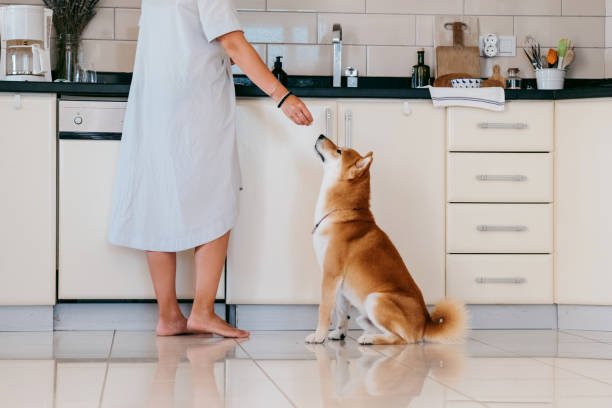
Adaptability
Shiba Inus are highly adaptable dogs, and their history as hunters in rugged terrain has contributed to their resilience. They can thrive in various environments, from city apartments to rural settings, as long as they receive proper exercise and mental stimulation.
Loyalty
Despite their independent nature, Shiba Inus form deep bonds with their owners. They are known for their unwavering loyalty and protective instincts, making them excellent family dogs.
Relevance of Origin
Understanding the origin of the Shiba Inu breed is essential in appreciating its characteristics today. The breed’s history as a skilled hunter in challenging terrain has left an indelible mark on its traits and temperament.
Independent Thinking
The Shiba Inu’s history of hunting in rugged terrain required independent thinking and problem-solving skills. These traits have been passed down through generations, making Shiba Inus intelligent and quick learners. However, their independence can also lead to stubbornness, making training a rewarding yet challenging experience.
Physical Characteristics
The breed’s compact size, alert expression, and curled tail are all a result of its historical role as a hunter. These physical traits are not just aesthetic; they serve a functional purpose, helping them excel in their hunting duties.
Adaptation
The Shiba Inu’s ability to adapt to various environments is a testament to its historical versatility. Whether they’re navigating dense shrubs or urban landscapes, Shiba Inus are well-suited to different living conditions.
Conclusion
The Shiba Inu’s history and origin provide a fascinating glimpse into the development of this ancient breed. From their role as skilled hunters in Japan’s challenging terrain to their distinctive traits and unwavering loyalty, Shiba Inus are a testament to the enduring qualities that have made them beloved companions worldwide. In the next section, we will explore their unique personality traits in more detail and provide insights into their suitability as family pets.
Understanding the Shiba Inu Breed’s Traits
Physical Characteristics
The Shiba Inu’s physical attributes are a key part of what makes this breed so captivating. Let’s take a closer look at their size, coat type, color variations, and any distinguishing features.
Size
Shiba Inus are a small to medium-sized breed, and their size is well-balanced. Adult Shiba Inus typically stand between 13.5 to 16.5 inches at the shoulder, with males often slightly larger than females. This compact size makes them agile and well-suited for their historical role as hunters in dense shrubbery.
Coat Type
The Shiba Inu boasts a striking double coat that consists of a dense, soft undercoat and a straight, harsh outer coat. This coat type served a practical purpose in their history, providing insulation and protection from the elements during hunting expeditions. It also contributes to their plush and fluffy appearance.
Color Variations
Shiba Inus come in a range of captivating colors, including:
- Red: The most common color, which can range from a light tan to a deep, vibrant red.
- Sesame: A combination of red and black-tipped hairs, creating a sesame seed-like appearance.
- Black & Tan: Featuring a black saddle with tan points on the face, legs, and paws.
- Cream: Less common but equally stunning, cream-colored Shiba Inus have a creamy, pale coat.
- Sable: This color variation features a predominantly red coat with black-tipped hairs throughout.
The variety in coat colors adds to the breed’s aesthetic appeal and individuality.
Distinguishing Features
Several distinguishing features set Shiba Inus apart:
- Tail: Shiba Inus have a thick, curled tail that rests over their back, giving them a distinct appearance reminiscent of a fox.
- Eyes: Their almond-shaped eyes are bright and expressive, conveying curiosity and intelligence.
- Ears: Triangular and standing erect, their ears add to their alert and perky expression.
Temperament Overview
Understanding the Shiba Inu’s temperament is crucial when considering them as family pets. Let’s explore their personality traits, suitability for families, and compatibility with other pets.
Suitability as Family Pets
Shiba Inus have a unique temperament that sets them apart from many other breeds. They are known for their independence and often display cat-like behavior. While they are deeply loyal to their owners, they may not always seek constant attention or affection. This can make them an excellent choice for individuals or families who appreciate a more independent canine companion.
Unique Personality Traits
- Loyalty: Despite their independent nature, Shiba Inus form strong bonds with their families and are fiercely loyal.
- Alertness: These dogs are highly alert and make excellent watchdogs, as they are quick to sense and alert their owners to any potential threats.
- Independence: Shiba Inus are known for their self-reliance and problem-solving abilities. They prefer to figure things out on their own, which can make training challenging.
- Curiosity: Their inquisitive nature means they enjoy exploring their surroundings and investigating new sights and smells.
Safety with Children

While Shiba Inus can make wonderful family pets, it’s essential to consider their temperament when there are children in the household. Shiba Inus tend to be more reserved and may not have the patience for rough play or constant attention from young children. However, with proper socialization and supervision, they can coexist harmoniously with kids.
Compatibility with Other Pets
Shiba Inus have a strong prey drive, which means they may have a natural instinct to chase smaller animals. Proper socialization from a young age can help reduce this tendency, making it possible for them to live with other pets, including cats. However, it’s crucial to monitor their interactions, especially with smaller animals.
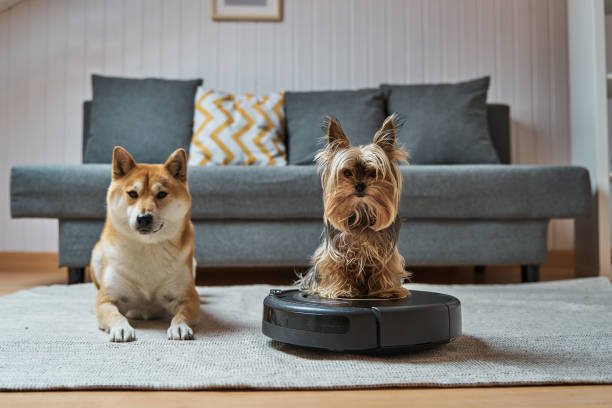
Environment Needs
Understanding the Shiba Inu’s environmental requirements is vital to ensuring they settle well into your home environment.
Space
Despite their small to medium size, Shiba Inus are active dogs that benefit from having space to move around. A yard where they can play and explore is ideal, but they can adapt to apartment living if provided with regular exercise and mental stimulation.
Temperature Tolerance
Shiba Inus are relatively adaptable to various climates, but they do best in moderate temperatures. Their thick double coat provides insulation, making them more resilient to colder weather. In hot weather, it’s essential to provide them with shade and access to water to prevent overheating.
Training and Socialization
Training and socialization play a significant role in shaping a Shiba Inu’s behavior and temperament. Here are some key considerations:
Trainability
Shiba Inus are intelligent but can be independent and stubborn. Positive reinforcement-based training methods work best with this breed. Consistency, patience, and clear boundaries are essential when training a Shiba Inu. Early socialization is crucial to expose them to various people, pets, and environments.
Socialization
Early socialization helps Shiba Inus become well-adjusted and confident adults. Exposing them to different experiences, people, animals, and environments from a young age can help reduce any potential anxiety or aggression issues. Socialization is particularly important if you plan to have them coexist with other pets.
Conclusion
Understanding the physical characteristics, temperament, environmental needs, and training requirements of the Shiba Inu breed is key to providing them with a happy and fulfilling life as a beloved family member. While their unique personality traits may present challenges, the loyalty and distinctiveness of Shiba Inus make them a rewarding choice for those who appreciate their independence and spirited nature. In the next section, we will delve into the essential care and maintenance of Shiba Inus, including grooming, exercise, and health considerations.
Health Considerations and Care for Shiba Inus
Common Health Issues
While Shiba Inus are generally healthy dogs, like all breeds, they can be prone to specific health issues. It’s crucial for Shiba Inu owners to be aware of these potential concerns and to schedule regular veterinary check-ups to ensure their furry companions remain in optimal health.
Hip Dysplasia
Hip dysplasia is a common orthopedic condition in dogs, and Shiba Inus can be susceptible to it. This condition occurs when the hip joint doesn’t develop properly, leading to pain and decreased mobility. Regular exercise and maintaining a healthy weight can help reduce the risk of hip dysplasia.
Patellar Luxation
Patellar luxation, or “trick knee,” is another orthopedic issue that Shiba Inus may experience. It occurs when the kneecap shifts out of its normal position, causing discomfort and lameness. Surgery may be required to correct severe cases.
Allergies
Shiba Inus can develop allergies, which may manifest as skin irritation, itching, or digestive problems. Identifying and avoiding allergens in their environment or diet is essential. Consultation with a veterinarian may be necessary to manage allergies effectively.
Eye Conditions
Some Shiba Inus may be prone to eye conditions such as glaucoma and progressive retinal atrophy (PRA). Regular eye examinations by a veterinarian can help catch and address these issues early.
Hypothyroidism
Hypothyroidism occurs when the thyroid gland doesn’t produce enough hormones, leading to weight gain, lethargy, and skin problems. Medication can help manage this condition effectively.
Dental Issues
Dental health is vital for Shiba Inus. They can be prone to dental problems like tartar buildup and gum disease. Regular teeth brushing and dental check-ups can help maintain their oral health.
Lifespan and Longevity
The average lifespan of a Shiba Inu ranges from 12 to 15 years. With proper care and attention to their health, many Shiba Inus live long and healthy lives. Here are some tips for promoting a longer and healthier life for your Shiba Inu:
- Regular Veterinary Check-Ups: Schedule routine check-ups with your veterinarian to catch and address health issues early.
- Healthy Diet: Provide a balanced and nutritious diet that meets their specific needs.
- Weight Management: Maintain a healthy weight through portion control and regular exercise to prevent obesity.
- Exercise and Mental Stimulation: Ensure they receive adequate exercise and mental stimulation to keep them physically and mentally fit.
- Socialization: Continue socializing your Shiba Inu throughout their life to prevent behavioral issues.
- Grooming: Regular grooming not only keeps them looking their best but also helps identify and address any health concerns early.
Diet and Nutrition
Proper nutrition is essential for Shiba Inus to maintain their health and vitality. Here’s a breakdown of their dietary needs, portion control, and recommended feeding schedules.
Dietary Needs
Shiba Inus thrive on high-quality dog food that is appropriate for their age, size, and activity level. Look for dog food brands that list a high-quality source of animal protein as the primary ingredient. Avoid foods with excessive fillers and artificial additives.
Portion Control
Portion control is crucial to prevent obesity, which can lead to various health issues. Follow the feeding guidelines on the dog food package, but also monitor your Shiba Inu’s weight and adjust portions accordingly. Remember that treats and snacks should be factored into their daily calorie intake.
Feeding Schedule
Establish a regular feeding schedule for your Shiba Inu. Most adult Shiba Inus do well with two meals a day. Puppies may require more frequent feeding. Avoid leaving food out all day, as it can lead to overeating.
Fresh Water
Always provide access to fresh, clean water. Proper hydration is essential for overall health.
Exercise and Activity
Shiba Inus are an active breed and require regular exercise to stay healthy and happy. Here’s how to ensure they get the physical and mental stimulation they need.
Daily Walks
Take your Shiba Inu for daily walks to provide them with opportunities for exercise and mental stimulation. A brisk walk or two each day is essential to keep them physically fit.
Interactive Play
Engage in interactive play sessions with toys and games. Shiba Inus enjoy activities that challenge their problem-solving skills and agility.
Mental Stimulation
Provide puzzle toys and engage in training sessions to keep their minds active. Shiba Inus are intelligent and thrive on mental stimulation.
Off-Leash Time
If you have access to a secure, fenced area, allow your Shiba Inu to run off-leash. However, be cautious, as their independent nature may lead them to explore if not properly trained in recall.
Grooming and Maintenance
Maintaining your Shiba Inu’s grooming and hygiene is not only essential for their appearance but also for their overall health and comfort.
Coat Care
- Brush their double coat regularly to prevent matting and reduce shedding.
- During shedding seasons, invest in a shedding tool to help manage the excess fur.
- Bathe your Shiba Inu when necessary, usually every two to three months or when they get dirty.
Ear and Eye Cleaning
- Regularly inspect and clean their ears to prevent wax buildup and infections.
- Keep their eyes clean by wiping away any discharge or tear stains.
Dental Care
- Brush your Shiba Inu’s teeth regularly to prevent dental issues. Use a dog-specific toothbrush and toothpaste.
- Offer dental chews and toys to help reduce tartar buildup.
Shedding
Shiba Inus are moderate shedders throughout the year, with heavier shedding during seasonal changes. Regular brushing and a proper diet can help minimize shedding. Be prepared to vacuum and use lint rollers to manage loose fur around your home.
Conclusion
Caring for a Shiba Inu involves regular attention to their health, diet, exercise, and grooming needs. By understanding their common health issues, promoting a healthy lifestyle, and providing proper care, you can ensure your Shiba Inu enjoys a long, happy, and healthy life as a cherished member of your family. In the final section of this comprehensive guide, we’ll explore some tips for adopting and raising a Shiba Inu puppy, as well as insights into rescue and adoption options for those considering giving a Shiba Inu a forever home.
Choosing and Adopting a Shiba Inu Dog Breed
Reasons for Adoption
Adopting a Shiba Inu can be an incredibly rewarding experience, both for you and the dog. In this section, we’ll explore the benefits of adopting this breed, with a focus on giving rescue dogs a second chance at a loving home.
Giving a Second Chance
One of the most significant reasons for adopting a Shiba Inu is the opportunity to provide a second chance to a dog in need. Many Shiba Inus end up in rescue organizations due to various reasons, including changes in their owners’ circumstances or behavioral challenges. By adopting, you’re giving a dog the chance to experience love, care, and stability once again.
Rescue Dogs Are Grateful
Rescue dogs often show immense gratitude to their new owners. Shiba Inus, in particular, can form strong bonds with their adoptive families. When given love and care, they often reciprocate with unwavering loyalty and affection.
Supporting Rescue Organizations
Choosing to adopt a Shiba Inu from a rescue organization or shelter also supports their important work. These organizations work tirelessly to rescue and rehabilitate dogs, ensuring they find suitable and loving homes. By adopting, you’re contributing to this noble cause.
Research and Preparation
Before adopting a Shiba Inu, it’s essential to do your research and be adequately prepared for the responsibilities that come with dog ownership. Here are some tips to consider:
Breed-Specific Needs
Shiba Inus have specific needs that potential owners should be aware of. They are an active breed that requires regular exercise and mental stimulation. Their independent nature means training can be challenging, so patience and consistency are crucial. Additionally, Shiba Inus tend to have a strong prey drive, which may affect their compatibility with other pets.
Financial Responsibilities
Owning a dog comes with financial responsibilities, including expenses for food, grooming, veterinary care, and potential emergencies. Be sure to budget for these costs and ensure you have the means to provide for your Shiba Inu’s well-being.
Lifestyle Considerations
Evaluate your lifestyle to determine if it aligns with the needs of a Shiba Inu. Consider factors such as your daily schedule, living arrangements, and family dynamics. Shiba Inus thrive in environments where they receive attention and exercise.
Puppy or Adult Dog
Decide whether you want to adopt a Shiba Inu puppy or an adult dog. Puppies require more time, training, and patience, while adult dogs may already be house-trained and have some basic obedience skills.
Adoption Process
The adoption process for a Shiba Inu typically involves several steps, which may vary depending on the rescue organization or shelter. Here’s a general overview of what to expect:
Application
Start by filling out an adoption application provided by the rescue organization. This application may ask questions about your living situation, experience with dogs, and your expectations for adopting a Shiba Inu.
Home Visit
Some rescue organizations conduct home visits to ensure that your living environment is suitable for a Shiba Inu. This step is taken to ensure the safety and well-being of the dog.
Adoption Fee
Expect to pay an adoption fee, which helps cover the costs of the dog’s care, vaccinations, spaying or neutering, and other expenses incurred by the rescue organization.
Adoption Agreement
You’ll be asked to sign an adoption agreement outlining your responsibilities as the new owner. This agreement may include provisions for proper care, training, and medical care for the Shiba Inu.
Transition Period
Be prepared for an adjustment period as your new Shiba Inu settles into their new home. It may take time for them to become accustomed to their new environment and family.
Breeding and Ethical Considerations
While adoption is an admirable choice, some individuals may consider purchasing a Shiba Inu from a breeder. If you’re leaning towards this option, it’s crucial to prioritize responsible breeding practices and ethical considerations.
Responsible Breeding
If you decide to buy a Shiba Inu from a breeder, seek out responsible breeders who prioritize the health and well-being of their dogs. Responsible breeders conduct health screenings for genetic conditions, provide proper socialization for puppies, and prioritize the overall welfare of their dogs.
Health Screening
Ensure that the breeder you choose conducts health screenings for common Shiba Inu health issues, such as hip dysplasia, patellar luxation, and eye conditions. Ask for documentation of these screenings to ensure the health of your future Shiba Inu.
Genetic Diversity
Responsible breeders also consider genetic diversity to prevent inbreeding and maintain the breed’s overall health. Inbreeding can lead to genetic disorders, so it’s crucial to choose a breeder who follows ethical breeding practices.
Conclusion
Choosing and adopting a Shiba Inu is a significant decision that comes with both responsibilities and rewards. Whether you decide to adopt a rescue Shiba Inu or purchase from a responsible breeder, prioritizing the well-being and welfare of the dog should be your top consideration. By making an informed and responsible choice, you can provide a loving and fulfilling life for your Shiba Inu and enjoy the unique companionship this breed has to offer.
Popularity and Recognition of the Shiba Inu Breed
Current Popularity
The Shiba Inu is a captivating breed that has garnered considerable popularity over the years, both in its native Japan and around the world. In this section, we’ll explore the breed’s current popularity, any notable trends in ownership, and the factors that make Shiba Inus so beloved.
Global Appeal
Shiba Inus have gained a dedicated following of admirers across the globe. Their unique combination of fox-like looks, independent personalities, and unwavering loyalty has made them a sought-after breed.
Internet Sensation
In recent years, Shiba Inus have become internet sensations, thanks to the rise of social media platforms. Videos and photos of Shiba Inus showcasing their quirky behaviors and charming antics have gone viral, further increasing the breed’s popularity.
Trends in Ownership
While Shiba Inus have always been a popular breed, there have been some trends in ownership worth noting:
- Urban Living: Shiba Inus are well-suited to urban living due to their adaptability and size. They are often chosen by city dwellers looking for a smaller breed that can thrive in apartment settings.
- Active Lifestyles: The breed’s active nature attracts individuals and families who enjoy outdoor activities and exercise. Shiba Inus make excellent companions for hiking, running, and exploring the great outdoors.
- Companionship: Many people choose Shiba Inus for their loyal and affectionate nature. They make wonderful companions for those seeking a close bond with their pets.
Breed Recognition
The Shiba Inu has earned recognition and accolades from various kennel clubs and breed organizations, solidifying its status as a distinguished breed with unique qualities.
American Kennel Club (AKC)
The Shiba Inu is recognized by the American Kennel Club (AKC), one of the most prominent canine organizations in the United States. The AKC acknowledges Shiba Inus as part of the Non-Sporting Group, highlighting their distinct characteristics and status as a companion animal.
Fédération Cynologique Internationale (FCI)
The Fédération Cynologique Internationale (FCI), which is the international canine organization, also recognizes the Shiba Inu. Under the FCI’s classification, Shiba Inus fall into Group 5, Section 5, as a Spitz and Primitive type.
Japan Kennel Club
In its native Japan, the Shiba Inu holds a special place in the hearts of dog enthusiasts. The Japan Kennel Club (JKC) recognizes the breed and plays a vital role in preserving its heritage and promoting responsible breeding.
Breed Clubs
Shiba Inu breed clubs exist worldwide, with members dedicated to upholding the breed’s standards, supporting responsible breeding, and organizing events and activities for Shiba Inu owners and enthusiasts.
Notable Breed Varieties
The Shiba Inu is known for its consistency in appearance and temperament, but there are some regional and color variations within the breed. Let’s explore these distinct varieties:
Japanese Shiba Inu
The Japanese Shiba Inu represents the breed in its home country and adheres to the breed standards set by the Japan Kennel Club (JKC). Japanese Shiba Inus are typically smaller in size compared to their American counterparts, with a more refined and fox-like appearance. They often have a curled or sickle-shaped tail and are recognized for their red and sesame colorations.
American Shiba Inu
American Shiba Inus are recognized by the American Kennel Club (AKC) and may exhibit subtle differences in size and appearance compared to Japanese Shiba Inus. They are known for their red, sesame, and black & tan color variations. While they share the same breed traits, American Shiba Inus may have more variation in coat colors.
Sesame Shiba Inu
Sesame Shiba Inus have a unique and striking coat pattern characterized by a mixture of red and black-tipped hairs. This pattern creates an appearance similar to sesame seeds, hence the name. Sesame Shiba Inus are highly regarded for their distinctive and eye-catching appearance.
Cream Shiba Inu
Cream Shiba Inus are a rarer color variety within the breed. They have a pale cream-colored coat, which sets them apart from the more common red and sesame Shiba Inus. Their gentle and elegant appearance makes them stand out.
Black & Tan Shiba Inu
Black & Tan Shiba Inus have a saddle-like black coat with tan points on the face, legs, and paws. This color variety adds diversity to the breed’s appearance, and their striking contrast makes them particularly appealing.
Conclusion
The Shiba Inu breed’s current popularity extends far beyond its native Japan, thanks to its unique traits, internet fame, and recognition by esteemed kennel clubs. Whether you’re drawn to the charming Japanese variety, the more varied American version, or one of the distinctive coat color variations, Shiba Inus continue to capture the hearts of dog lovers worldwide. Their individuality, spirited personality, and unwavering loyalty make them a beloved breed among those who appreciate their distinct appeal.
Exercise and Activity Recommendations for Shiba Inus
Ensuring your Shiba Inu gets the right amount of exercise and maintaining a proper diet are essential for their overall health and well-being. In this section, we’ll provide a detailed exercise plan and nutrition guidelines to help you keep your Shiba Inu happy and healthy.
Exercise Plan
Shiba Inus are an active breed that thrives on regular exercise and mental stimulation. Providing them with appropriate activities will not only keep them physically fit but also help prevent behavioral issues that can arise from boredom. Here’s a comprehensive exercise plan for your Shiba Inu:
Daily Walks
- Frequency: Aim for at least one brisk walk per day. Some Shiba Inus may benefit from two shorter walks.
- Duration: A typical walk should last around 30 minutes to an hour, depending on your Shiba Inu’s energy level.
- Leash Training: Ensure they are well-trained on a leash to prevent pulling and erratic behavior during walks.
Playtime
- Interactive Toys: Engage your Shiba Inu with interactive toys that challenge their problem-solving skills.
- Fetch: Shiba Inus enjoy playing fetch, so consider incorporating this activity into your daily routine.
- Hide and Seek: Hide treats or toys around the house for them to find, stimulating their natural curiosity.
Mental Stimulation
- Training Sessions: Regular training sessions not only reinforce obedience but also provide mental exercise. Shiba Inus are intelligent and enjoy learning new commands.
- Puzzle Toys: Invest in puzzle toys that dispense treats as rewards for solving puzzles. This keeps their minds active and engaged.
Socialization
- Dog Parks: If your Shiba Inu is well-socialized and enjoys the company of other dogs, visits to dog parks can provide valuable exercise and social interaction.
- Playdates: Arrange playdates with other friendly dogs to ensure they get the socialization they need.
Agility Training
- Agility Courses: Consider enrolling your Shiba Inu in agility classes or set up your agility course in your backyard. Shiba Inus excel in agility activities due to their agility and problem-solving abilities.
Mental Challenges
- Scent Games: Shiba Inus have an excellent sense of smell. Hide treats or toys and let them use their noses to find them.
- Obedience and Trick Training: Teach them new tricks and commands to keep their minds engaged.
Swimming
- Water Activities: Some Shiba Inus enjoy swimming, so if you have access to a safe swimming area, consider incorporating water activities into their exercise routine.
Nutrition and Feeding Guidelines
Proper nutrition is fundamental to your Shiba Inu’s health. Tailoring their diet to their size, age, and activity level is essential. Here are some specific dietary recommendations:
Dietary Needs
- High-Quality Dog Food: Choose a high-quality dog food brand that lists a quality source of animal protein as the primary ingredient. Avoid foods with excessive fillers and artificial additives.
- Protein: Shiba Inus benefit from a diet rich in protein, which helps maintain muscle mass and energy levels.
- Portion Control: Be mindful of portion sizes to prevent overfeeding and obesity. Follow the feeding guidelines on the dog food package as a starting point, but monitor your Shiba Inu’s weight and adjust portions as needed.
- Age-Appropriate Food: Ensure you are feeding an age-appropriate diet. Puppies, adult dogs, and seniors have different nutritional requirements.
Dietary Restrictions and Allergies
- Allergies: Shiba Inus can develop allergies, so monitor their reactions to specific foods. Common allergens can include grains, chicken, beef, and dairy. If you suspect allergies, consult with a veterinarian for guidance on an elimination diet.
Feeding Schedule
Establishing a regular feeding schedule helps maintain consistency and prevents overeating. Most adult Shiba Inus do well with two meals a day. Here’s a typical feeding schedule:
- Morning: First meal
- Evening: Second meal
Avoid leaving food out all day, as this can lead to overeating. Stick to scheduled meal times to help with portion control.
Fresh Water
Always provide access to fresh, clean water. Proper hydration is crucial for overall health. Ensure their water bowl is filled regularly, especially after exercise.
Conclusion
Creating a well-rounded exercise plan and providing proper nutrition are key to keeping your Shiba Inu happy, healthy, and thriving. Regular exercise not only maintains their physical fitness but also prevents behavioral problems stemming from boredom. Tailoring their diet to their specific needs and monitoring portion control helps prevent obesity and ensures they receive the right nutrients at the right times. By following these exercise and nutrition guidelines, you’ll help your Shiba Inu lead a vibrant and fulfilling life as a cherished member of your family.
Socialization and Training Tips for Shiba Inus
Socialization and training are crucial aspects of raising a well-behaved and balanced Shiba Inu. This section will provide breed-specific training tips, considering their unique temperament and intelligence, as well as advice on socializing them with other dogs and people.
Training Tips
Shiba Inus are known for their intelligence and independent nature. While they can be trained successfully, it’s essential to approach training with patience, consistency, and a good understanding of their breed-specific characteristics. Here are some training tips tailored to Shiba Inus:
Start Early
Begin training and socialization as early as possible. Puppies are more receptive to learning and adapting to new experiences during their formative months.
Positive Reinforcement
Use positive reinforcement techniques, such as treats, praise, and play, to reward desired behaviors. Shiba Inus respond well to positive reinforcement and are motivated by rewards.
Be Consistent
Consistency in commands and expectations is vital. Use the same cues and rewards consistently to avoid confusion.
Short and Engaging Sessions
Shiba Inus can have short attention spans, so keep training sessions brief and engaging. Five to ten minutes of focused training several times a day is often more effective than long, monotonous sessions.
Socialization
Early Socialization
Socialize your Shiba Inu with other dogs, animals, and people from a young age. Early exposure to various situations helps prevent fearfulness or aggression in adulthood.
Positive Social Experiences
Ensure that social interactions are positive experiences. Reward calm and friendly behavior when meeting new dogs and people.
Controlled Environments
Initially, introduce your Shiba Inu to new situations and environments in a controlled manner to build confidence gradually.
Challenging Breed Traits
Shiba Inus have some challenging breed traits that may require specific training approaches:
Independence
Shiba Inus are independent thinkers and may not always respond to commands. Be patient and use positive reinforcement to motivate them.
Prey Drive
Many Shiba Inus have a strong prey drive, which can make them chase small animals. Leash training is essential to keep them safe during walks.
Stubbornness
Shiba Inus can be stubborn, so avoid harsh training methods. Instead, make training fun and engaging to capture their interest.
Common Behavioral Traits of Shiba Inus
Understanding the common behavioral traits of Shiba Inus is essential for successful ownership. Here, we’ll discuss both positive and challenging traits associated with the breed and offer advice on managing and addressing these behaviors.
Positive Behavioral Traits
Loyal and Affectionate
Shiba Inus are known for their loyalty and affection toward their families. They often form strong bonds with their owners and are devoted companions.
Alertness
Shiba Inus are naturally alert and make excellent watchdogs. They are quick to alert you to any potential intruders or unusual sounds.
Cleanliness
Shiba Inus are naturally clean dogs and tend to groom themselves like cats. They are meticulous about their hygiene and often keep their living area tidy.
Intelligent
Shiba Inus are highly intelligent dogs and excel in problem-solving tasks. This intelligence makes them quick learners when training is approached positively.
Challenging Behavioral Traits
Independence
One of the most notable traits of Shiba Inus is their independence. They often do things on their terms and may not always obey commands.
Stubbornness
Shiba Inus can be stubborn and willful. They may challenge authority and require a patient and consistent approach to training.
Reserved with Strangers
Shiba Inus can be reserved or aloof with strangers, which is part of their protective nature. Proper socialization from an early age can help mitigate this behavior.
Territorial Behavior
Some Shiba Inus exhibit territorial behavior and may be possessive of their space or belongings. Early training and socialization can help address this trait.
Prey Drive
Many Shiba Inus have a strong prey drive and may chase smaller animals. This can make off-leash activities challenging in uncontrolled environments.
Managing and Addressing Behavioral Issues
To manage and address behavioral issues in Shiba Inus, consider the following tips:
Positive Reinforcement
Use positive reinforcement techniques to reward desirable behaviors. Avoid punitive or harsh training methods, as they can lead to resistance.
Consistency
Consistency in commands and expectations is crucial. Ensure that all family members use the same cues and reward systems.
Early Socialization
Start socialization and training early to expose your Shiba Inu to various people, animals, and environments.
Mental Stimulation
Provide mental stimulation through puzzle toys, training sessions, and engaging activities to keep your Shiba Inu’s mind active.
Exercise
Ensure your Shiba Inu receives adequate exercise to prevent boredom and destructive behavior. A tired dog is a well-behaved dog.
Professional Help
If you encounter severe behavioral issues or challenges beyond your expertise, consider seeking help from a professional dog trainer or behaviorist who has experience with Shiba Inus.
Conclusion
Shiba Inus are a unique and captivating breed with both positive and challenging behavioral traits. Understanding their independence, intelligence, and potential stubbornness is key to successful ownership. By employing positive reinforcement, consistency, early socialization, and proper training techniques, you can manage and address behavioral issues effectively. With patience and dedication, your Shiba Inu can become a well-behaved and loyal companion, enriching your life with their unique personality and unwavering loyalty.
Personal Stories and Testimonials: The Shiba Inu Experience
In this section, we’ll dive into real-life stories and testimonials from dedicated owners of Shiba Inus. These personal anecdotes offer a human touch, providing practical insights into the unique joys and challenges of sharing your life with this captivating breed.
A Bond Like No Other
Emily’s Story
Emily, a proud owner of a Shiba Inu named Kuma, describes the bond she shares with her furry friend as nothing short of extraordinary. “From the moment I brought Kuma home, I knew there was something special about him,” Emily recalls. “His independence and intelligence intrigued me, and over time, we formed an unbreakable bond.”
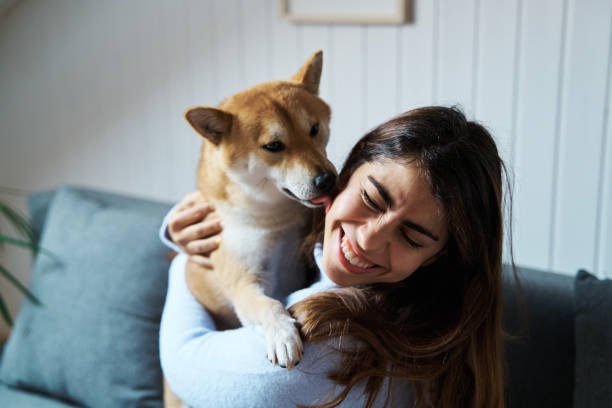
Kuma’s loyalty and affection have been a constant source of joy for Emily. “People often think Shiba Inus are aloof, but Kuma proved them wrong. He’s always there when I need him, and his playful antics never fail to make me smile.”
Training Triumphs
One of the key aspects of Emily’s experience with Kuma has been training. “Shiba Inus are known for their stubbornness, but I embraced the challenge,” Emily says. “Consistency and positive reinforcement worked wonders. Kuma learned an impressive array of tricks and commands, showcasing his intelligence.”
Emily also emphasizes the importance of early socialization. “I made sure Kuma had positive interactions with other dogs and people from the start. This helped him become more confident and well-behaved.”
Adventures with My Shiba
Alex’s Tale
Alex, an adventurous soul, found the perfect companion in his Shiba Inu, Miko. “Miko and I are explorers at heart,” Alex shares. “We’ve hiked through lush forests, climbed mountain peaks, and explored hidden trails together. Shiba Inus are fantastic adventure buddies because of their energy and enthusiasm for the outdoors.”
Miko’s agility and natural curiosity have led to unforgettable experiences. “We’ve encountered wildlife, crossed streams, and even camped under the starry sky. Miko’s adventurous spirit matches my own, making our journeys together truly special.”

The Quirky Shiba Personality
Despite their love for adventure, Shiba Inus are known for their quirks. Alex laughs as he recalls some of Miko’s antics. “Shibas have a sense of humor, no doubt about it. Miko sometimes plays hide-and-seek with me in the house, and his mischievous grin is priceless. He’s also a master of the ‘Shiba scream’ – that unique vocalization they use to get their way.”
A Shiba’s Healing Touch
Sarah’s Story
Sarah’s life took an unexpected turn when she adopted Bella, a Shiba Inu, from a rescue organization. “Bella came into my life during a challenging period,” Sarah shares. “She had a calming presence and an uncanny ability to sense when I needed comfort. Bella became my emotional support, and I’m forever grateful for her presence.”

Bella’s gentle nature and unwavering companionship helped Sarah navigate life’s ups and downs. “Shiba Inus have this incredible capacity to connect with their owners on a deep emotional level. Bella’s intuitive understanding of my moods was both surprising and comforting.”
Overcoming Challenges
While Bella brought immense joy into Sarah’s life, she also faced some unique challenges. “Shiba Inus can be stubborn, and Bella was no exception,” Sarah admits. “Training her required patience and creativity. I had to find training methods that resonated with her independent spirit.”
Sarah highlights the importance of understanding a Shiba’s personality and adapting training techniques accordingly. “Bella’s quirks made her who she was, and I wouldn’t change a thing. It’s all part of the Shiba Inu experience.”
Shiba Inus: A Lifelong Adventure
Rob’s Testimonial
Rob has been a Shiba Inu enthusiast for over two decades and has shared his life with several Shibas. “Each Shiba Inu I’ve had has been a unique adventure,” Rob reflects. “They’ve brought challenges and joys in equal measure, and I wouldn’t have it any other way.”
Rob describes the Shiba Inu’s intelligence and independence as qualities that continually amaze him. “You’re always learning with a Shiba. They keep you on your toes and teach you patience like no other breed.”
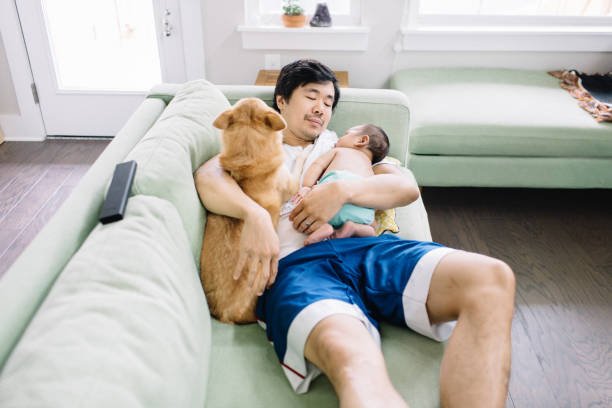
A Journey of Discovery
For Rob, owning Shiba Inus has been a journey of self-discovery as well. “These dogs have a way of teaching you about yourself. They require a balance of guidance and freedom, and in the process, you learn about your own strengths and weaknesses as a dog owner.”
Rob encourages prospective Shiba Inu owners to embrace the breed’s unique qualities. “If you’re up for a lifelong adventure filled with laughter, surprises, and endless love, Shiba Inus might be the perfect companions for you.”
Conclusion
The personal stories and testimonials shared by Shiba Inu owners offer a glimpse into the diverse experiences of those who have welcomed this captivating breed into their lives. From the unbreakable bonds formed to the adventures embarked upon, Shiba Inus leave a lasting impression on the hearts of their owners.
These anecdotes also highlight the importance of understanding the breed’s quirks and embracing their unique qualities. Shiba Inus are known for their intelligence, independence, and unwavering loyalty, making them cherished companions for those who appreciate their distinct personalities.
Whether you’re drawn to their adventurous spirit, their healing touch, or their ability to bring joy and laughter into your life, Shiba Inus have a way of leaving an indelible mark. For those considering bringing a Shiba Inu into their family, these personal stories serve as a testament to the rewarding journey that awaits.
Breed-Specific Accessories and Care Products for Shiba Inus
When it comes to caring for your beloved Shiba Inu, having the right accessories and care products can make a significant difference. In this section, we’ll recommend specific items tailored to the unique needs and characteristics of Shiba Inus, from grooming tools to harnesses and toys.
Grooming Essentials
Shiba Inus have a thick double coat that requires regular grooming to keep them looking their best. These grooming tools will help you maintain their coat and overall hygiene:
1. Slicker Brush
A slicker brush is an essential grooming tool for Shiba Inus. It’s designed to remove loose fur, tangles, and mats from their dense coat. Regular brushing helps reduce shedding and prevents mats from forming.
2. Undercoat Rake
Shiba Inus have a soft, dense undercoat that can become especially thick during shedding seasons. An undercoat rake helps remove loose undercoat fur and prevents it from accumulating, reducing the risk of matting.
3. Shedding Blade
Shiba Inus are known for shedding, especially during seasonal changes. A shedding blade is an effective tool for removing loose hair from their coat, reducing the amount of fur left around your home.
4. Deshedding Shampoo
Using a deshedding shampoo designed for dogs can help reduce excessive shedding and keep your Shiba Inu’s coat clean and healthy. These shampoos often contain ingredients that promote a shiny and manageable coat.
Harnesses and Collars
Proper restraint and comfort are crucial when walking or training your Shiba Inu. Consider these harnesses and collars designed with their specific needs in mind:
5. No-Pull Harness
Shiba Inus can be strong-willed and may pull during walks. A no-pull harness is an effective training tool that discourages pulling by distributing the pressure more evenly across their chest, making walks more comfortable for both you and your dog.
6. Escape-Proof Harness
Shiba Inus are known for their agility and sometimes their ability to slip out of regular harnesses. An escape-proof harness with secure fastenings can prevent escapes during walks or outings.
7. Martingale Collar
Martingale collars are excellent for Shiba Inus, especially if they have a tendency to slip out of traditional collars. These collars provide gentle correction without the choking effect of choke collars, ensuring your dog’s safety.
Toys and Mental Stimulation
Keeping your Shiba Inu mentally stimulated is essential to prevent boredom and behavioral issues. These toys are designed to challenge their intelligence and keep them engaged:
8. Puzzle Toys
Interactive puzzle toys challenge your Shiba Inu’s problem-solving skills. Hide treats or kibble inside these toys, and your dog will enjoy figuring out how to retrieve them.
9. Treat-Dispensing Toys
Treat-dispensing toys provide mental stimulation and a tasty reward. Fill these toys with your Shiba Inu’s favorite treats, and they’ll have a blast trying to get them out.
10. Interactive Ball Launchers
Shiba Inus love to play fetch, and interactive ball launchers allow them to engage in this activity even when you’re not available. These devices automatically launch balls for your dog to chase and retrieve.
Health and Wellness
Maintaining your Shiba Inu’s health and well-being is a top priority. Consider these health-related products:
11. High-Quality Dog Food
Choose a high-quality dog food that meets the specific nutritional needs of Shiba Inus. Look for brands that list a quality source of animal protein as the primary ingredient.
12. Dental Care Products
Shiba Inus can be prone to dental issues, so dental care is essential. Invest in toothbrushes and toothpaste designed for dogs to maintain their oral health.
13. Joint Supplements
As Shiba Inus age, they may develop joint issues. Joint supplements containing glucosamine and chondroitin can help support their joint health.
14. Flea and Tick Preventatives
Protect your Shiba Inu from fleas and ticks by using vet-recommended flea and tick preventatives. These products come in various forms, such as topical treatments and collars.
Training and Behavioral Aids
Training and managing your Shiba Inu’s behavior are essential aspects of responsible ownership. Consider these training and behavioral aids:
15. Training Treats
High-quality training treats can be a powerful motivator during training sessions. Look for small, tasty treats that your Shiba Inu loves.
16. Clicker
A clicker is a valuable training tool that helps reinforce positive behavior. The clicking sound signals to your dog that they’ve done something right, making it easier to communicate during training.
17. Calming Supplements
If your Shiba Inu experiences anxiety or stress, especially during thunderstorms or fireworks, calming supplements containing natural ingredients can help soothe their nerves.
Conclusion
Caring for your Shiba Inu involves providing them with the right accessories and care products tailored to their specific needs. Grooming tools, harnesses, and collars ensure their comfort and safety during walks and outings. Toys and mental stimulation products keep their minds engaged and prevent boredom.
Investing in your Shiba Inu’s health and wellness includes selecting high-quality dog food, dental care products, joint supplements, and flea and tick preventatives. Additionally, training and behavioral aids like training treats, clickers, and calming supplements can help you effectively communicate with and manage your Shiba Inu’s behavior.
By choosing the right accessories and care products, you’ll be better equipped to provide your Shiba Inu with a happy, healthy, and fulfilling life as a cherished member of your family.
Frequently Asked Questions (FAQs) About Shiba Inus
In this section, we’ll address some common questions about Shiba Inus, covering topics that may not have been covered in the main sections of this comprehensive guide.
1. What Is the Origin of the Shiba Inu Breed?
Shiba Inus are one of Japan’s ancient breeds, dating back to around 300 B.C. They were originally bred for hunting small game in Japan’s mountainous regions.
2. Are Shiba Inus Good Family Dogs?
Shiba Inus can be good family dogs if properly socialized and trained from an early age. They are loyal and affectionate but can be reserved with strangers. Supervision is essential when they are around young children.
3. Do Shiba Inus Get Along with Other Pets?
Shiba Inus can coexist with other pets, including cats, if introduced to them at a young age. However, they may have a strong prey drive, so it’s crucial to monitor their interactions.
4. How Much Exercise Do Shiba Inus Need?
Shiba Inus are an active breed and require regular exercise. They should have at least 30-60 minutes of physical activity each day. Mental stimulation through interactive toys and puzzles is also important to prevent boredom.
5. Are Shiba Inus Aggressive?
Shiba Inus are not inherently aggressive, but they can be aloof or reserved with strangers. Early socialization and proper training can help prevent aggression or fear-based behaviors.
6. Are Shiba Inus Difficult to Train?
Shiba Inus are intelligent but can be independent and stubborn. Training requires patience, consistency, and positive reinforcement techniques. Early socialization is essential for successful training.
7. How Much Grooming Does a Shiba Inu Need?
Shiba Inus have a double coat that sheds seasonally. They require regular brushing to manage shedding and prevent mats. During shedding seasons, more frequent brushing is necessary.
8. What Is the Lifespan of a Shiba Inu?
The average lifespan of a Shiba Inu is around 12 to 15 years. Proper care, including a balanced diet, exercise, and regular veterinary check-ups, can contribute to their longevity.
9. Are Shiba Inus Prone to Specific Health Issues?
While Shiba Inus are generally healthy dogs, they can be prone to certain health issues, including hip dysplasia, patellar luxation, and allergies. Responsible breeding practices can help reduce the risk of genetic conditions.
10. Do Shiba Inus Bark a Lot?
Shiba Inus are known for their vocalization, including the “Shiba scream.” While they may bark or vocalize to alert their owners or express excitement, excessive barking can often be curbed through training and socialization.
These frequently asked questions cover various aspects of Shiba Inu ownership, from their origin and temperament to grooming needs and training challenges. Understanding these aspects will help you provide the best care and companionship to your Shiba Inu.
Conclusion: Shiba Inus – Captivating Companions
In this comprehensive guide, we’ve explored the captivating world of Shiba Inus, from their unique characteristics and history to their care requirements and the joys and challenges of sharing your life with this remarkable breed. As we conclude this journey, let’s recap key points, emphasize the importance of responsible ownership, and encourage the consideration of adoption.
Summarizing Key Points
Shiba Inu Characteristics
- Shiba Inus are a small to medium-sized breed known for their fox-like appearance, curled tail, and expressive eyes.
- They are independent, intelligent, and have a strong prey drive, making early socialization and training crucial.
- Shiba Inus have a thick double coat that requires regular grooming to manage shedding.
- Their exercise needs include daily physical activity and mental stimulation to prevent boredom.
- Shiba Inus can be loyal and affectionate with their families but may be reserved with strangers.
- The breed is generally healthy but can be prone to certain health issues, emphasizing the importance of responsible breeding.
Responsible Ownership
- Responsible Shiba Inu ownership involves providing proper care, including a balanced diet, regular exercise, and routine veterinary check-ups.
- Training and socialization are essential for managing the breed’s independent nature and preventing behavioral issues.
- Understanding the Shiba Inu’s quirks, such as the “Shiba scream,” and embracing their unique personality traits is part of the Shiba Inu experience.
- Proper grooming practices, including brushing and dental care, contribute to the dog’s overall well-being.
- Responsible breeding practices aim to reduce the risk of genetic conditions and promote the health of the breed.
Encouraging Adoption
While purchasing a Shiba Inu from a reputable breeder is a valid option for those seeking a specific lineage or show-quality dog, adoption should always be considered. Shiba Inus, like many breeds, are in need of loving homes, and adopting a rescue can be a rewarding experience.
Why Consider Adoption?
- Save a Life: By adopting, you provide a second chance to a Shiba Inu in need, offering them a loving home and a brighter future.
- Variety of Ages: Shiba Inu rescues often have dogs of various ages, allowing you to choose a puppy or an adult dog that fits your lifestyle.
- Behavioral History: Many rescue organizations provide information about a dog’s behavior and temperament, helping you find a Shiba Inu that matches your preferences.
- Reduce Overpopulation: Adopting from a rescue organization supports the effort to reduce pet overpopulation and promotes responsible pet ownership.
Resources for Adoption
- Shiba Inu Rescue Organizations: Explore rescue organizations that specialize in Shiba Inus, such as the National Shiba Inu Rescue or local Shiba Inu rescue groups.
- Shelter Adoption: Check local animal shelters and humane societies for Shiba Inus in need of homes. Sometimes, these organizations have Shiba Inus available for adoption.
- Online Adoption Platforms: Websites like Petfinder and Adopt-a-Pet allow you to search for adoptable Shiba Inus in your area.
In Closing
Shiba Inus are a captivating breed known for their unique characteristics and spirited personalities. Owning a Shiba Inu can be a rewarding experience when approached with responsibility, patience, and dedication. Whether you choose to adopt a rescue or acquire a Shiba Inu from a breeder, the bond you’ll form with this breed is sure to be filled with love, laughter, and unforgettable moments.
As you embark on your journey with a Shiba Inu, remember the importance of proper care, training, and socialization. These efforts will ensure that your Shiba Inu thrives as a cherished member of your family, sharing in the adventures and joys of life together.

